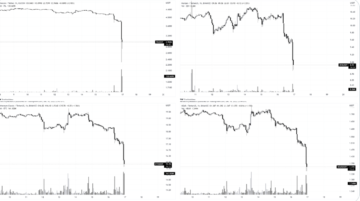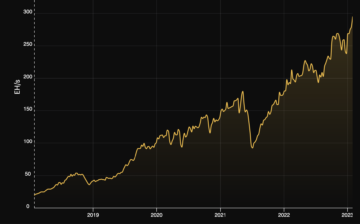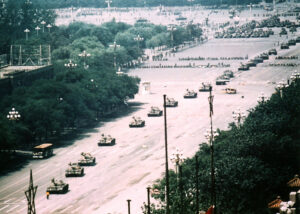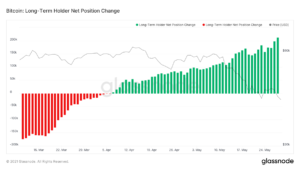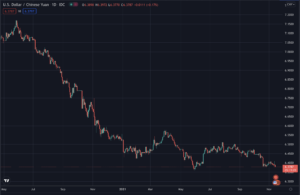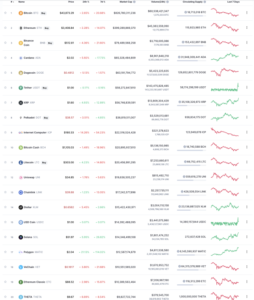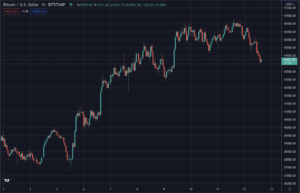The Russian government has began depleting its savings, with it already spending more than half of ruble reserves that the budget had accumulated in bank accounts.
They are now opening the piggy bank, Russia’s sovereign wealth fund called the National Wealth Fund, which invests savings from oil and gas sales and at times covers federal budget expenditure with one of its main aims being to support the Russian pension system.
Russian media now reports that on Thursday, Prime Minister Mikhail Mishustin signed a decree on the allocation of a trillion rubles from the National Welfare Fund to cover the deficit of the federal treasury, which has spent more than the revenue intake since the beginning of summer.
“The funds will be used, among other things, to fully fulfill social obligations to citizens, as well as to replace government borrowing, repay government debt and provide budget loans to the regions,” the Finance Ministry explained.
In June-September, the budget saw a deficit of 1.5 trillion rubles, which the government covered at the expense of the “ruble pocket” – funds that the Ministry of Finance kept in bank accounts. Their volume from 5.3 trillion rubles on June 1 shrank to 2 trillion rubles on October 19, according to the Federal Treasury.
And although the Ministry of Finance has reserves of rubles for about a month of expenses, the department can no longer spend them.
The withdrawal of state funds in addition has become a problem for banks, which are forced to borrow from the Central Bank to cover the outflows. In September, they borrowed 1.1 trillion rubles from the regulator, increasing their total debt by 36% in a month.
At the same time, the budget plan assumes a sharp increase in spending – by 20% in the remaining months of the year, up to 9.3 trillion rubles. And with such inputs, the annual budget deficit could exceed the 1.3 trillion rubles pledged by the Finance Ministry, especially given the EU oil embargo, which should come into force at the end of the year, Raiffeisenbank analysts write.
The National Wealth Fund will become the main source of patching up the “hole” in the treasury, they believe. And spending in 2022 is just the beginning.
In the draft 2023-25 budget, the government included a plan to spend two-thirds of the fund’s free money.
It has 7.5 trillion rubles in total that are liquid. According to the draft budget, by the end of next year, only 2.6 trillion rubles will remain from these funds, and by the end of 2024 – 2.3 trillion.
The total volume of the NWF, according to the Ministry of Finance, will almost halve in two years to 5.9 trillion rubles.
And that’s based on current plans. The addition of 300,000 drafted men to the Russian army, while an estimated 700,000 of the workforce has fled to bordering countries, will add even more pressure on a deficit spending country.
Technocrats Staring at Bankruptcy?
The president of Russia’s central bank, Elvira Nabiullina, said back in April that “in the second quarter or at the beginning of the third, we will enter a phase of structural transformation.”
She further warned “the period when the economy has been able to live on the reserves is over.”
Russia has enjoyed a surplus for years due to an increase in oil and gas production, allowing its president Vladimir Putin to spend on social welfare and things like the Moscow wheel which was recently unveiled.
Now however they’re entering a period of deficit spending, in part because revenue is falling with Russia’s GDP contracting by 4.2% in the second quarter, the biggest such fall in the growth rate since 2010 if we ignore the March 2020 period.
Currently they’re burning through about 1 trillion rubles a quarter, which is worth about $20 billion, or not far from 10% of their tax intake.
That’s a huge gap with the debt markets largely closed off to Russia, at least where financial powerhouses in London and New York are concerned.
They still have a buffer. So far they’ve been going through their ‘current account’ savings, and now are opening their actual savings, and once those are depleted they will be limited to spending only what they receive in taxes.
To fund their military adventure therefore, they may have to take away more and more from civil society, putting a huge burden which may well risk the collapse of the entire state.
It is thought therefore that Putin is trying to end the conflict now that he has occupied the area which gives him an advantage for further incursions in years to come.
The Institute for the Study of War has stated that if Ukraine does not secure Kherson, then Odesa and their access to the entire Black Sea will not be defensible once a refreshed Russian army returns in years to come.
And to secure Kherson, they need a buffer in Crimea as it is no surprise Russia first took over Crimea in 2014, with it then preparing for eight years to somewhat easily take Kherson once they could advance from Crimea.
To put forward his view, some are suggesting Putin is using Elon Musk, the CEO of SpaceX, a company which has received threats from Russia that it might shoot down its satellites.
Those are American satellites, making such action an act of war, but Putin has called USA an enemy, as well as Nato.
Musk nonetheless has received a public invite by Dmitry Medvedev, the Deputy Chair of the Security Council of the Russian Federation, to visit Moscow in a clear sign that Musk is seen as friendly in a country that calls USA an enemy.
There’s suggestions however USA is opening a probe on Musk, a security review on Starlink as well as on his bid to buy Twitter.
Musk has security clearance in the United States, yet publicly revealed that China had expressed concerns to him for his supply of Starlink to Ukraine.
All this so suggesting the conflict will likely continue for some time, with Ukraine trying to liberate Kherson while it awaits the arrival of the draftees.
The question so being whether Russia can afford to continue the adventure as their savings will seemingly be depleted in time for the Presidential election in or around January 2024.
Putin is expected to run of course, and some suggest this entire adventure was just so that he can secure his 100th term, but Russian media has started lauding what are now being called technocrats.
That’s people like Nabiullina, the central banker, as well as others in power in the civil service who are effectively running the country.
They might disagree with the war or not, they just do their job. Raising the question of whether they can take over, if necessary, and if Russia reaches the point where they have no money.
In which case the departure of Putin, which at some point will come of course as he is not immortal, needs not be chaotic.
Because Putin had one job, and he did do it fairly well: the restoration of the Russian civil service.
There’s all sorts of propaganda about that now, but all know that communism showed itself to not work to the point it led to starvation and bread lines in the late 80s and early 90s, bringing about the collapse of communism and the Soviet Union.
That was a collapse of the civil service too, which no longer functioned. It was a collapse from East Berlin, down to the Adriatic Sea, all the way to… well, Kherson and then up to Moscow.
It happened in all this vast area at the same time when they all pretty much shared the same chaotic experience in the 90s, and just as interestingly, they all restored their civil service at the same time in the late 90s and early 2000s.
Raising the question of just how much was it Putin that restored the civil service in Russia, and how much it was a natural occurrence as it happened at the same time in Poland too, in Bucharest and in all of Eastern Europe, which is now more the west.
The latter of course maintained their democracy, disproving the base thesis of Putin’s 100th term that Russia was abused or exploited when all went through the same process, regained their feet at the same time, and then Putin decided to keep ruling.
But, it has certainly become clear at this stage that he is not of a ruling cloth. And although he makes the decisions, Russia is clearly being run by the actual rulers, whom seemingly don’t see any reason to go against Putin as they just have to wait, and of course choosing chaos is not easy for anyone, so they’re probably hoping for an eventual smooth transition.
With it to be seen however just what they do once they start running out of money as reality at some point will hit this very small country, from a global stage perspective, with an economy of just $1.7 trillion.
There’s already reports of troops being undersupplied and so on, and that’s while they still have savings, with it likely to get a lot worse to the point perhaps the country even goes bankrupt entirely as wars are extremely expensive.
That stage that Nabiullina spoke of, therefore, seems to be here for Russia, or nearing, with these technocrats now starting to face more and more difficult decisions that at this point must include concerns about their banking system and a potential collapse.
- Bitcoin
- blockchain
- blockchain compliance
- blockchain conference
- coinbase
- coingenius
- Consensus
- crypto conference
- crypto mining
- cryptocurrency
- decentralized
- DeFi
- Digital Assets
- ethereum
- machine learning
- Markets
- news
- non fungible token
- plato
- plato ai
- Plato Data Intelligence
- Platoblockchain
- PlatoData
- platogaming
- Polygon
- proof of stake
- Second
- Trustnodes
- W3
- zephyrnet



